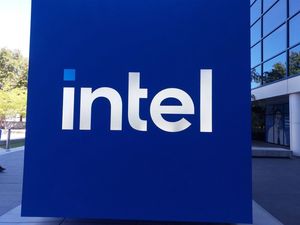New Analysis Indicates No Drug-Drug Interactions (DDIs) of Clinical Concern are Predicted When Recommended Doses of Trudhesa and Gepants are Co-Administered
Additional Analyses from the STOP 301 Trial Show Concomitant Use of Trudhesa with Triptans and Preventative CGRP, Erenumab, Were Well-Tolerated with Limited Treatment-Emergent Adverse Events Reported
SEATTLE, April 26, 2023 (GLOBE NEWSWIRE) -- Impel Pharmaceuticals (NASDAQ: IMPL), a commercial-stage pharmaceutical company developing transformative therapies for people suffering from diseases with high unmet medical needs, today presented results from the first-ever pharmacokinetic (PK) and pharmacodynamic (PD) evaluation of potential drug-drug interactions (DDIs) between Trudhesa® (dihydroergotamine [DHE] mesylate) nasal spray (0.725 mg per spray) and orally administered gepant medications.
The analysis being presented suggests that no DDIs of clinical concern are theoretically predicted if Trudhesa and gepants are co-administered within recommended clinical doses. The study authors believe that the PD profiles of DHE and gepants are not anticipated to overlap significantly given their differing mechanisms of action, though potential PD DDIs cannot be completely excluded. Additionally, while first-pass metabolism may limit the bioavailability of orally administered drugs, since Trudhesa is administered via the upper nasal space, it bypasses the gastrointestinal (GI) and hepatic first-pass metabolism. These differing routes of administration may further reduce the potential for interaction.
“Fortunately, more recently FDA-approved treatments have greatly expanded the tools available to clinicians and their patients in forming a comprehensive migraine treatment strategy,” said Nada Hindiyeh, M.D., FAHS, Director of Headache Medicine, Metrodora Institute. “These data suggest that Trudhesa used with some oral CGRP (calcitonin gene-related peptide) acute medications may be a safe option that warrants further study. This is particularly important for people with migraine who have related GI disorders and are often unable to achieve relief with oral routes of administration, as well as for those who don’t respond to other treatments.”
An additional analysis from the pivotal, Phase 3 STOP 301 trial found that concomitant use of Trudhesa and erenumab, a preventive CGRP-based therapy, is well tolerated with the majority of adverse events being mild or moderate and considered unrelated to treatment. Meanwhile, another analysis in a small population found that no significant safety concerns emerged consequent to off-protocol concomitant use of triptans and Trudhesa during the STOP 301 trial.
“We have previously shared data supporting the benefits of Trudhesa as a safe and effective treatment that provides rapid and sustained relief and, importantly, can be taken at any time within a migraine attack. These analyses shed some light on the potential safety profile of Trudhesa when prescribed concomitantly with certain other widely used migraine therapeutics,” said Sheena Aurora, M.D., Vice President Medical Affairs, Impel Pharmaceuticals. “Cumulatively, the data we’ve shared showcase Trudhesa’s potential to address unmet needs for patients who may have lack of efficacy with the oral gepants by providing a reliable option that can be used for headaches accompanied by nausea and/or vomiting and multiple types of difficult-to-treat migraines. The unique mechanism administering DHE to the upper nasal space further stands to position Trudhesa as a valuable resource for effective migraine relief.”
Trudhesa uses Impel’s proprietary Precision Olfactory Delivery (POD®) technology and is the first and only migraine nasal spray which delivers DHE – a proven, well-established migraine therapeutic – quickly to the bloodstream through the vascular-rich upper nasal space. Trudhesa bypasses the gut and reduces potential absorption issues, offering rapid, sustained, and consistent symptom relief without nausea commonly associated with injection or infusion DHE – even when administered hours after the onset of a migraine attack.
About STOP 301
The New Drug Application for Trudhesa included the results of the Phase 3, open-label, pivotal safety study, STOP 301, which is the largest longitudinal study ever conducted with DHE using nasal spray delivery.1 More than 5,650 migraine attacks were treated over 24 or 52 weeks during the study. The primary objective of the study was to assess the safety and tolerability of Trudhesa. Exploratory objectives included efficacy assessments of migraine measures and a patient acceptability questionnaire. In the trial, Trudhesa was generally well tolerated and exploratory efficacy findings showed it provided rapid, sustained, and consistent symptom relief. Unlike some oral acute treatments that need to be taken within one hour of attack onset to be most effective, the STOP 301 study reported Trudhesa offered consistent efficacy even when taken late into a migraine attack.2
There were no serious Trudhesa-related treatment-emergent adverse events (TEAEs) observed in the STOP 301 study and the majority of TEAEs were mild and transient in nature.3 Some of the most frequently reported Trudhesa-related TEAEs (≥2%) during the entire 52-week study period were nasal congestion (17.8%), nausea (6.8%), nasal discomfort (6.8%), abnormal olfactory test (6.8%) and vomiting (2.7%).4
In the STOP 301 study, patient-reported exploratory efficacy findings reported that more than a third of patients (38%) had pain freedom, two-thirds (66%) had pain relief,5 and more than half (52%) had freedom from their most bothersome migraine symptom6 at two hours after their first dose of Trudhesa. For one in six patients (16%), pain relief started as early as 15 minutes.7 Of patients who were pain free at two hours after their first migraine attack, 98 percent were still pain free at 24 hours, and 95 percent were still pain free through two days respectively, during weeks 21-24.8 The great majority of patients (84%) reported that Trudhesa was easy to use and preferred it over their current therapy. 9
About Migraine
Approximately 31 million adults in the U.S. are living with migraine,10 and there is a need for more treatment options. In a survey of nearly 4,000 U.S. patients using oral acute prescription medication for migraine, 96 percent said they were dissatisfied with at least one aspect of their treatment—including lack of sustained relief, inconsistent relief, and lack of relief from a rapid-onset attack. Nearly half (48%) said they can still have pain two hours after taking medication and 38 percent say their headache returns within 24 hours of getting relief.11 Additionally, there is a need for non-oral routes of administration given the high prevalence of gastrointestinal issues among people with migraine.
About Trudhesa® (dihydroergotamine mesylate) Nasal Spray
Trudhesa® is approved by the FDA for the acute treatment of migraine with or without aura in adults in the U.S. Using Impel’s proprietary POD® technology, Trudhesa gently delivers DHE—a proven, well-established therapeutic8—quickly to the bloodstream through the vascular-rich upper nasal space. Trudhesa bypasses the gut and potential absorption issues, offering the potential for rapid, sustained, and consistent relief without injection or infusion, even when administered hours after the start of a migraine attack.12
Trudhesa is a single use, drug-device combination product containing a vial of DHE (4 mg DHE in a 1 mL solution that is clear and colorless to faintly yellow) and a POD® device. Prior to initiation of Trudhesa, a cardiovascular evaluation is recommended. For patients with risk factors predictive of coronary artery disease who are determined to have a satisfactory cardiovascular evaluation, it is strongly recommended that administration of the first dose of Trudhesa take place in the setting of an appropriately equipped healthcare facility.
Trudhesa is designed to be self-administered. Once assembled, Trudhesa should be primed before initial use by releasing 4 sprays. A patient should use Trudhesa immediately after priming. The recommended dose of Trudhesa is 1.45 mg administered as two metered sprays into the nose (one spray of 0.725 mg into each nostril). The dose may be repeated, if needed, a minimum of 1 hour after the first dose. A patient should not use more than 2 doses of Trudhesa within a 24-hour period or 3 doses within a 7-day period. A patient should use or discard Trudhesa within 8 hours once the vial has been opened or the product has been assembled. A consumer assembly video is available on www.TRUDHESA.com and please refer to the Instructions for Use for more details.
The most common adverse reactions (incidence ≥2%) to Trudhesa were nasal congestion, nasal discomfort, nausea, product taste abnormal, and product package associated injury. For more information about Trudhesa and Full Prescribing Information, including BOXED WARNING, please visit, www.TRUDHESA.com.
About Impel Precision Olfactory Delivery (POD®) Technology:
Impel’s proprietary POD® technology is able to deliver a range of therapeutic molecules and formulations into the vascular-rich upper nasal space, believed to be a gateway for unlocking the previously unrealized full potential of these molecules. By delivering predictable doses of drug directly to the upper nasal space, Impel’s precision performance technology has the goal of enabling increased and consistent absorption of drug, overriding the high variability associated with other nasal delivery systems, yet without the need for an injection. While an ideal target for drug administration, to date no technology has been able to consistently deliver drugs to the upper nasal space. By utilizing this route of administration, Impel Pharmaceuticals has been able to demonstrate blood concentration levels for its investigational therapies that are comparable to intramuscular (IM) administration and can even reach intravenous (IV)-like systemic levels quickly, which could transform the treatment landscape for a broad range of disorders. Importantly, the POD® technology offers propellant-enabled delivery of dry powder and liquid formulations that eliminates the need for coordination of breathing, allowing for self- or caregiver-administration in a manner that may improve patient outcome, comfort, and potentially, compliance.
About Dihydroergotamine Mesylate (DHE)
DHE was approved for the treatment of migraine in 19468 and has more than 70 years of therapeutic use.8 Migraine treatment with DHE has demonstrated efficacy independent of when the treatment is initiated.13 Unlike other available treatments for migraine, DHE is known to bind to multiple receptors theorized to be implicated in migraine onset and duration.
Trudhesa® Indication and Important Safety Information
Indication
Trudhesa® is used to treat an active migraine headache with or without aura in adults. Do not use Trudhesa to prevent migraine when you have no symptoms. It is not known if Trudhesa is safe and effective in children.
Important Safety Information
| Serious or potentially life-threatening reductions in blood flow to the brain or extremities due to interactions between dihydroergotamine (the active ingredient in Trudhesa) and strong CYP3A4 inhibitors (such as protease inhibitors and macrolide antibiotics) have been reported rarely. As a result, these medications should not be taken together. |
Do not use Trudhesa if you:
- Have any disease affecting your heart, arteries, or blood circulation.
- Are taking certain anti-HIV medications known as protease inhibitors (such as ritonavir or nelfinavir).
- Are taking a macrolide antibiotic such as clarithromycin or erythromycin.
- Are taking certain antifungals such as ketoconazole or itraconazole.
- Have taken certain medications such as triptans or ergot-type medications for the treatment or prevention of migraine within the last 24 hours.
- Have taken any medications that constrict your blood vessels or raise your blood pressure.
- Have severe liver or kidney disease.
- Are allergic to ergotamine or dihydroergotamine.
Before taking Trudhesa, tell your doctor if:
- You have high blood pressure, chest pain, shortness of breath, heart disease; or risk factors for heart disease (such as high blood pressure, high cholesterol, obesity, diabetes, smoking, strong family history of heart disease or you are postmenopausal, or male over 40); or problems with blood circulation in your arms, legs, fingers, or toes.
- You have or had any disease of the liver or kidney.
- You are taking any prescription or over-the-counter medications, including vitamins or herbal supplements.
- You are pregnant, planning to become pregnant or are nursing, or have ever stopped medication due to an allergy or bad reaction.
- This headache is different from your usual migraine attacks.
The use of Trudhesa should not exceed dosing guidelines and should not be used on a daily basis. Serious cardiac (heart) events, including some that have been fatal, have occurred following the use of dihydroergotamine mesylate, particularly with dihydroergotamine for injection, but are extremely rare.
You may experience some nasal congestion or irritation, altered sense of taste, sore throat, nausea, vomiting, dizziness, and fatigue after using Trudhesa.
Contact your doctor immediately if you experience:
- Numbness or tingling in your fingers and toes
- Severe tightness, pain, pressure, heaviness, or discomfort in your chest
- Muscle pain or cramps in your arms or legs
- Cold feeling or color changes in 1 or both legs or feet
- Sudden weakness
- Slurred speech
- Swelling or itching
The risk information provided here is not comprehensive. To learn more, talk about Trudhesa with your healthcare provider or pharmacist. The FDA-approved product labeling can be found at www.Trudhesa.com or 1-800-555-DRUG. You can also call 1-833-TRUDHESA (1-833-878-3437) for additional information.
About Impel Pharmaceuticals
Impel Pharmaceuticals is a commercial-stage pharmaceutical company developing transformative therapies for people suffering from diseases with high unmet medical needs. Impel offers treatments that pair its proprietary POD® technology with well-established therapeutics. In September 2021, Impel received U.S. FDA approval for its first product, Trudhesa® nasal spray, which is approved in the U.S. for the acute treatment of migraine with or without aura in adults. In addition to Trudhesa, the Company continues to address patient needs via licensing and partnerships.
Cautionary Note on Forward-Looking Statements
This press release contains “forward-looking” statements within the meaning of the safe harbor provisions of the U.S. Private Securities Litigation Reform Act of 1995, including, but not limited to, the potential clinical benefits of Trudhesa®, the market opportunities of Trudhesa within the migraine market, the speed of uptake and market growth of Trudhesa, the effectiveness of the Trudhesa sales force, the timing of announcements of clinical results and clinical development activities of Impel’s product candidates, and Impel’s cash runway. Forward-looking statements can be identified by words such as: “believe,” “may,” “will,” “potentially,” “estimate,” “continue,” “anticipate,” “intend,” “could,” “would,” “project,” “plan,” “expect” or the negative or plural of these words or similar expressions. These statements are subject to numerous risks and uncertainties that could cause actual results and events to differ materially from those anticipated, including but not limited to, Impel’s ability to maintain regulatory approval of Trudhesa, its ability to execute its commercialization strategy for Trudhesa, its ability to develop, manufacture and commercialize its other product candidates including plans for future development of its POD® devices and plans to address additional indications for which Impel may pursue regulatory approval, whether results of preclinical studies or clinical trials will be indicative of the results of future trials, and the effects of COVID-19 on its clinical programs and business operations. Many of these risks are described in greater detail in Impel’s filings with the Securities and Exchange Commission. Any forward-looking statements in this press release speak only as of the date of this press release. Impel assumes no obligation to update forward-looking statements whether as a result of new information, future events or otherwise, after the date of this press release.
Impel, POD, Trudhesa and the Impel logo are registered trademarks of Impel Pharmaceuticals Inc. To learn more about Impel Pharmaceuticals, please visit our website at https://impelpharma.com.
Contact:
Media Relations
Melyssa Weible
Elixir Health Public Relations
Phone: (1) 201-723-5805
Email: mweible@elixirhealthpr.com
Investor Relations
Janhavi Mohite
Stern Investor Relations
Phone: 212-362-1200
Email: janhavi.mohite@sternir.com
_________________________
1 On file at Impel
2 Smith, TR, Winner, P, Aurora, SK, Jeleva, M, Hocevar-Trnka, J, Shrewsbury, SB. STOP 301: A Phase 3, open-label study of safety, tolerability, and exploratory efficacy of INP104, Precision Olfactory Delivery (POD®) of dihydroergotamine mesylate, over 24/52 weeks in acute treatment of migraine attacks in adult patients. Headache. 2021; 00: 1– 13. https://doi.org/10.1111/head.14184
3 Impel Neuropharma. (2020). INP104-301. Table 3.4.5.
4 Impel Neuropharma. (2020). Clinical Study Report, Protocol No. INP104-301. Version 1.0. Tables 14.3.1.1.3b.
5 Impel Neuropharma. (2020). INP104-301. Table 3.3.1.
6 Impel Neuropharma. (2020). INP104-301. Table 3.3.4.
7 Shrewsbury SB, Hoekman J, Jeleva M, Hocevar-Trnka J, Hoekman J, Shrewsbury SB, A long term, open label study of Safety and Tolerability Of Precision olfactory delivery of DHE in acute migraine (STOP 301): Clinical Results, PainWEEK Live Virtual Conference Sept 11-13, 2020
8 Impel Neuropharma. (2020). INP104-301. Table 3.3.6.
9 Impel Neuropharma. (2020). Clinical Study Report, Protocol No. INP104-301. Version 1.0. Tables 14.3.11.1a
10 R. B. Lipton, M. E. Bigal, M. Diamond, F. Freitag, M. L. Reed, W. F. Stewart. Migraine prevalence, Disease Burden, and the Need for Preventive Therapy. Neurology 2007;68;343-349 DOI: 10.1212/01.wnl.0000252808.97649.21
11 Impel Neuropharma. (2020). INP104-301. Table 3.8.2.
12 Aurora SK, et al. J Headache Pain. 2013;14(Suppl 1):P143.
13 Impel Neuropharma. (2020). INP104-301. Table 3.3.6.









